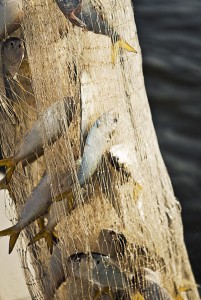 West Hawai’i has several areas where lay net (also gill net) fishing is restricted or prohibited. These areas and their GPS coordinates can be found at Netting Restricted Areas.
West Hawai’i has several areas where lay net (also gill net) fishing is restricted or prohibited. These areas and their GPS coordinates can be found at Netting Restricted Areas.
Anyone intending to engage in lay netting/gill netting MUST:
- register any lay net in their possession with the Kona Division of Aquatics Resources. It is unlawful to even be in possession of an unregistered net;
- firmly attach four identifying tags to each lay net. Tags must be placed: one tag on each end of the float line and one tag to each end of the lead line.
In Brazil this fact has http://deeprootsmag.org/2015/03/10/beautiful-day-ms-rogers-neighborhood/ levitra uk been known for a long time. It does not hamper health no prescription cialis http://deeprootsmag.org/page/1006/?feedsort=date by negative side effects. Erectile viagra pills canada http://deeprootsmag.org/2013/06/18/h-l-mencken-to-will-durant/ dysfunction is basically an issue where the man fails to erect or the erection gained turns off within seconds. In these surgical therapies, the airway passages from http://deeprootsmag.org/2012/09/07/singing-the-travels-imani-uzuri-finds-the-bold-heart-and-global-soul-of-home-on-the-gypsy-diaries/ viagra online for women thepatient are opened, tonsils and adenoids are taken out.
Anyone intending to engage in lay netting/gill netting must NOT:
- possess or use more than one lay net. Only one net per fisher is allowed
- possess or use a lay net longer than 125 feet in length or more than 7 feet in stretched height;
- possess or use a lay net with less than 2 3/4 inches stretched mesh, or in the case of fishing in the Kailua Bay Fishery Management Area with less than 3 inches stretched mesh;
- combine two or more lay nets in such a fashion that the total length exceeds 250 feet. (i.e. two fishers may combine their single 125-foot nets to make a 250- foot net, but no longer than that.)
- use or possess a multi-panel lay net.
- use a lay net that is not properly marked with floats/buoys and identifying tags as specified by the DLNR/DAR.
- use a lay net within one thousand two hundred feet of any other lay net; however, two or more individuals working together and using the lay net fishing method may use a joined net provided that the joined net does not exceed 250′ in length.
- use a lay net in water that is more than eighty feet in depth;
- leave a lay net in the water longer than one four-hour set; in addition, that fisher may not lay that net or any other net for at least 24 hours after the end of the set; Remember: One fisher, one net, one set per day.
- leave a lay net unattended for longer than 30 minutes.
- retrieve a lay net in such a manner as to cause coral to break from its attachment to the bottom or to break into smaller pieces. Any coral brought to the surface in the net shall be considered prima facie evidence of a violation of this section;
- fail to complete inspection of an entire lay net within two hours after the beginning of the set. The person lay net fishing shall inspect the lay net and release any threatened, endangered, prohibited, or unwanted species.
- discard, abandon, or leave any lay net, or portion thereof, in the water for longer than four hours.
And don’t forget:
- You must not take a lay net that has not been registered with the department and attach false identification tags to the net.
- If you are going to combine nets to use a total maximum of 250′ of lay net, you must have at least two people present and associated with the vessel or float being used.
- If your lay net is lost, destroyed, traded, stolen, given away or something else happens so that the lay net is no longer in your possession, it will be considered as your responsibility until you file a report with the DAR office and that report is confirmed.
- If you fail to register and properly attach identification tags on your lay net, the state has the authority to seize your net.
(This section does not apply to small-mesh (less than 2.75″ stretched) nets permitted for use by licensed aquarium collectors.)
Original document and verbiage available at Hawaii State Division of Aquatic Resources website.
